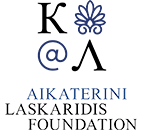Quranic inscriptions (29 Subjects)
Othoman emblem, taken by the Venetian army as a token of Venice's victory at the siege of Koroni in 1685.
View of the imperial tribune in Hagia Sophia in Istanbul. This tribune stood between the mihrab and the Columns from Ephesus, which were transferred to the imperial capital during the reign of Byzantine Emperor Justinian I.
View of the imperial tribune in Hagia Sophia in Istanbul. This tribune stood between the mihrab and the Columns from Ephesus, which were transferred to the imperial capital during the reign of Byzantine Emperor Justinian I.
Hagia Sophia in Istanbul: View of the western part of the upper gallery, where the throne of the Byzantine Emperor once stood.
View of the central nave of Hagia Sophia in Istanbul, right after its reconstruction by the Fossati brothers in 1847.
Gathering of devout Muslims at the Tower of the Winds in Athens, which was used as a tekije (dervish lodge). Sixteen ostrich eggs hang from the ceiling to avert the evil eye. A depiction of the first stage of the whirling dervishes' ritual: the faithful praise God and Prophet Muhammad.
The dance of the dervishes at the Tower of the Winds in Athens, which was used as a tekije (dervish lodge). Sixteen ostrich eggs hang from the ceiling to avert the evil eye. A depiction of the final stage of the whirling dervishes' ritual: The two main dancers whirl while holding each other by the sash. In green, wearing a white turban, the Sheich or head of the Dervishes, who animates the dancers with his voice and by playing the tambour.
Ottoman emblem, taken by the Venetian army as a token of the victory at the siege of Koroni in 1685.
Ottoman emblem, taken by the Venetian army as a token of the victory at the siege of Koroni in 1685.
Ottoman emblem, taken by the Venetian army as a token of the victory at the siege of Koroni in 1685.






























